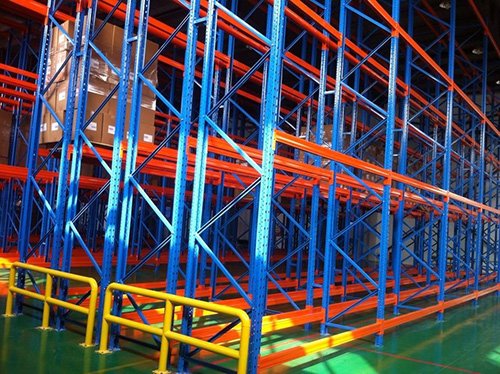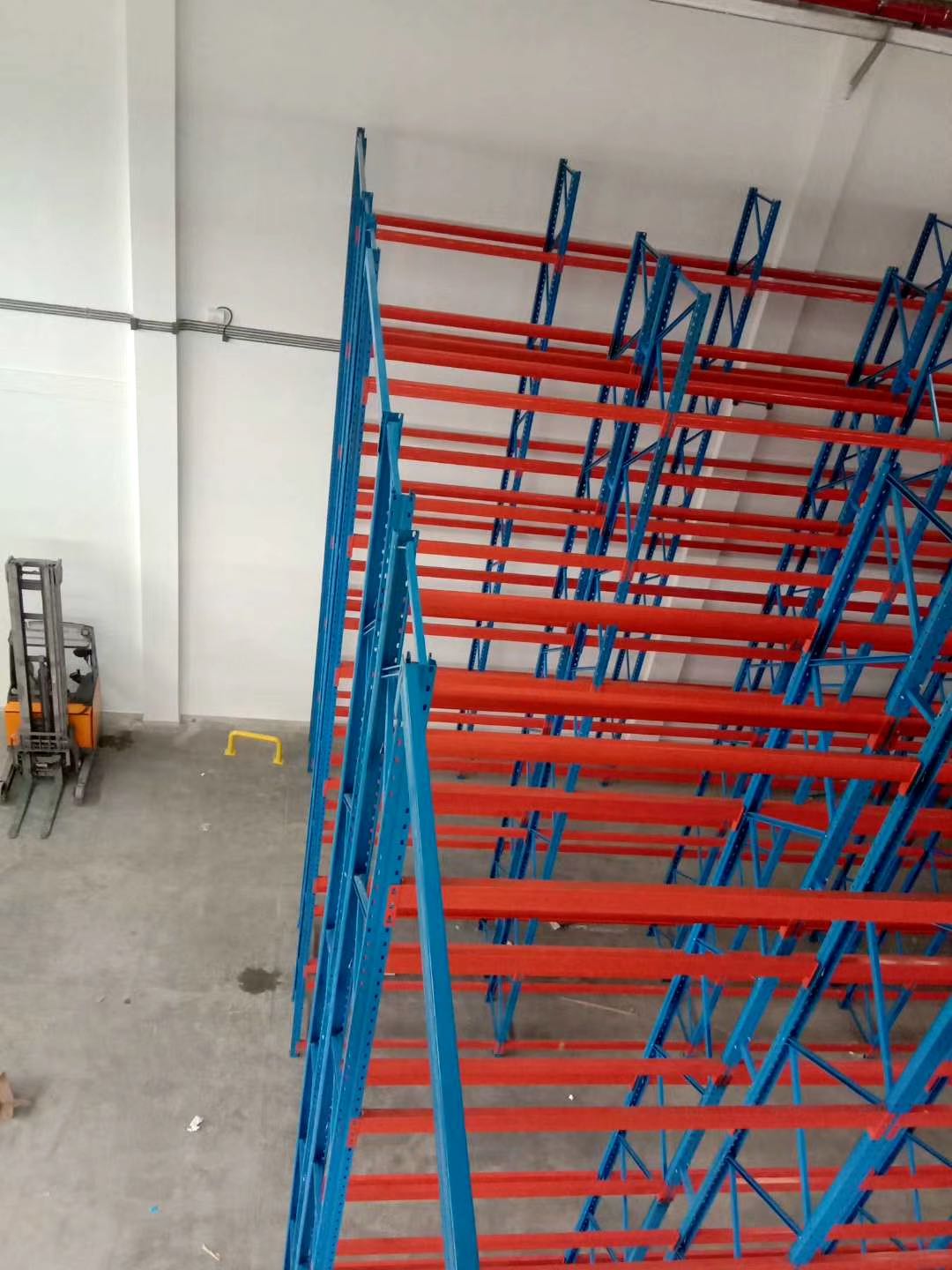In today's competitive logistics landscape, maximizing every square foot of warehouse space isn't just an advantage – it's a necessity. Traditional static shelving often leaves valuable floor space underutilized in aisles, creating a significant bottleneck for storage capacity and operational efficiency. Enter mobile racking systems, an ingenious high-density storage solution revolutionizing how warehouses operate. By intelligently eliminating wasted aisle space, mobile racking systems empower businesses to store significantly more inventory within the same footprint, streamline operations, and achieve substantial cost savings. This comprehensive guide delves deep into the world of mobile racking systems, exploring their mechanics, benefits, applications, and key considerations for implementation.

How Mobile Racking Systems Work: The Mechanics Behind the Magic
At their core, mobile racking systems transform static shelving into dynamic storage units capable of moving laterally. The fundamental components enabling this movement are:
Mobile Bases: Each row of racking sits atop a sturdy, engineered steel base frame equipped with heavy-duty wheels or rollers.
Floor Rails: Precision-engineered rails are securely anchored to the warehouse floor. These rails guide the movement of the mobile bases.
Drive System: Integrated into the mobile base is a mechanical or electro-mechanical drive system. This typically consists of:
Manual Systems: Utilize a hand crank mechanism geared to move the entire row with manageable effort.
Mechanical Assist Systems: Incorporate a gear reduction system activated by turning a handle or wheel, significantly reducing the physical force required.
Motorized Systems (Most Common): Feature electric motors controlled by push-button pendants, remote controls, or integrated warehouse management systems (WMS). Safety sensors are integral.
Control & Safety Mechanisms: Critical for safe operation. These include:
Aisle Locks: Prevent movement when an aisle is accessed (often integrated with the access platform or gate).
Safety Edges/Sensors: Detect obstructions in the aisle path and halt movement automatically.
Guide Wheels & Anti-Tilt Devices: Ensure smooth, stable travel along the rails and prevent racking from tipping.
Warning Signals: Lights and audible alarms activate before and during movement.
Operational Principle: Only one access aisle is open at any given time. To access a specific row, operators simply move adjacent rows laterally along the rails, either manually or via motor, creating the required aisle precisely where it's needed. Once access is complete, the rows are moved back, consolidating the storage blocks and eliminating the permanent aisles found in static systems.

Unparalleled Space Savings: The Primary Advantage of Mobile Racking
The most compelling benefit of mobile racking systems is their dramatic increase in storage density. Here's how they achieve this:
Elimination of Permanent Aisles: Traditional pallet racking requires fixed aisles wide enough for forklifts or order pickers to maneuver (typically 10-13 feet or more). Mobile racking systems replace multiple fixed aisles with a single access aisle that shifts location.
Increased Racking Rows: By minimizing the space dedicated to aisles, warehouses can fit significantly more rows of racking within the same floor area. Density increases often range from 50% to over 100% compared to standard static racking.
Optimized Cube Utilization: Mobile racking systems efficiently utilize the warehouse's cubic volume by packing more storage positions vertically and laterally. This is especially valuable in facilities where floor space expansion is impossible or prohibitively expensive.
Direct Cost Savings: Increased storage density translates directly into reduced costs per pallet position. Businesses can delay or avoid costly warehouse expansions, relocations, or leasing additional space. The return on investment (ROI) for mobile racking systems is frequently calculated based on these savings.
Versatility in Load Capacity and Configuration
Mobile racking systems are highly adaptable, designed to handle a diverse range of inventory profiles:
Palletized Goods: The most common application. Systems are engineered to support standard pallet sizes (48"x40", EUR pallets, etc.) and heavy loads, often exceeding 2,000 kg (4,400 lbs) per pallet position. Configurations include:
Selective Mobile Racking: Each pallet is individually accessible, ideal for high-SKU environments with frequent access to all items. Typically offers 2-3 pallets deep per row.
Double-Deep Mobile Racking: Stores pallets two deep within each row, further increasing density but requiring FIFO (First-In, First-Out) inventory management or specialized forklifts for deep reach.
Cantilever Mobile Racking: Designed for long, bulky items like timber, piping, or rolls, mounted on mobile bases.
Carton/Box Storage: Mobile racking systems excel in archive storage, libraries, and parts warehouses. Utilizing shelving decks instead of pallet beams, they manage smaller items efficiently, maximizing floor space for documents or components. Loads per shelf level are generally lower than palletized systems but can be substantial overall.
Customization: Systems can be tailored to specific needs, including varying bay widths, beam levels, decking types (wire mesh, particle board, steel), and integration with mezzanine structures. The mobile base design is engineered to match the static load capacity requirements of the racking structure it carries.
Control Systems and Safety: Ensuring Smooth and Secure Operations
Safe and efficient operation is paramount for mobile racking systems. Modern systems incorporate sophisticated controls and multiple layers of safety:
Control Options:
Manual Crank: Simple, low-cost, suitable for very light loads or infrequent access (e.g., archives).
Mechanical Assist: Reduces operator effort significantly while remaining independent of electrical power.
Electro-Mechanical (Motorized): The industry standard for palletized goods. Features:
Push-button pendants on the end of each row.
Wireless remote controls for operator convenience.
Integration potential with Warehouse Management Systems (WMS) or Building Management Systems (BMS) for automated aisle opening based on retrieval tasks.
Comprehensive Safety Features:
Aisle Access Control: Interlocked gates or platforms that physically prevent entry into an aisle and automatically lock the rows from moving when open. Opening the gate is usually the only way to release the row locks for movement.
Obstruction Detection: Safety laser scanners or pressure-sensitive edges along the moving row's base detect personnel or obstacles in the aisle path and immediately stop movement.
Emergency Stop Buttons: Strategically located on control pendants and often at row ends.
Warning Systems: Flashing lights and audible alarms activate several seconds before movement begins and continue during travel.
Anti-Collision Systems: For larger installations with multiple movable sections, systems prevent adjacent rows from moving simultaneously towards each other.
Seismic Locking (in active zones): Special pins or locks can engage automatically during seismic events to prevent uncontrolled movement.
Standards and Certification: Reputable mobile racking systems comply with stringent international safety standards (e.g., FEM 10.2.08, SEMA Codes, local building codes) and are often UL certified. Regular professional inspections are crucial.
Cost-Effectiveness and Return on Investment (ROI)
While the initial investment in mobile racking systems is higher than standard static racking, the long-term financial benefits are substantial and contribute to a compelling ROI:
Reduced Real Estate Costs: The primary driver. Doubling (or more) storage capacity within the existing footprint eliminates or postpones the need for expensive warehouse expansion, relocation, or leasing additional space. Savings on rent, property taxes, utilities (heating, cooling, lighting a smaller effective area), and construction costs are significant.
Lower Operating Costs:
Lighting & HVAC: Only the single active aisle needs full lighting and environmental control, reducing energy consumption.
Labor Efficiency: Faster access times (once the aisle is open) and potentially reduced travel distances for pickers within the dense storage block can improve productivity. Integration with WMS further optimizes workflows.
Reduced Material Handling: Denser storage can sometimes shorten overall travel paths for forklifts.
Increased Inventory Value: Ability to hold more stock readily available improves service levels and reduces stockouts.
Improved Inventory Management: High-density storage encourages better organization and can facilitate better inventory rotation practices (especially in selective configurations).
Longevity and Durability: High-quality mobile racking systems, properly maintained, have a very long operational lifespan, amortizing the initial investment over many years.
Calculating ROI: ROI is typically calculated by comparing the total installed cost of the mobile racking system against the annual savings generated (primarily real estate cost avoidance/savings, plus operational efficiencies). Payback periods often range from 2 to 5 years, depending on local real estate costs and the density increase achieved.
Implementation Considerations: Is Mobile Racking Right for You?
Successfully implementing mobile racking systems requires careful planning:
Floor Requirements: The floor must be extremely flat, level, and possess sufficient load-bearing capacity to support the concentrated loads of the fully loaded racks on their moving points and the anchored rails. Concrete slab strength, thickness, and condition are critical. A professional floor survey is mandatory.
Building Constraints: Clear ceiling height must accommodate the racking structure and MHE (Material Handling Equipment) reach. Building columns can impact layout and rail placement. Seismic activity levels influence design and safety features.
Inventory Profile: Suits medium-to-slow moving inventory better than ultra-fast-moving SKUs due to the time required to open an aisle. Ideal for high-value stock or items requiring secure storage.
Material Handling Equipment (MHE): Forklifts or order pickers must operate safely within the single access aisle width. Operators require specific training for maneuvering in the confined aisle and understanding system safety protocols.
Professional Design & Installation: Absolutely essential. Requires expert analysis of loads, floor, building structure, operational flows, and safety regulations. Installation is complex and must be performed by certified specialists.
Maintenance: Regular preventative maintenance (lubrication, inspection of mechanical components, safety system checks) is vital for longevity and safety. Service contracts are common.
Mobile racking systems represent a sophisticated and highly effective solution for businesses battling space constraints and seeking to optimize warehouse efficiency. By dynamically consolidating storage and eliminating wasted aisle space, they unlock dramatic increases in storage capacity – often doubling it or more – within existing facilities. While demanding careful consideration of floor strength, building parameters, and requiring a higher initial investment, the long-term benefits in reduced real estate costs, lower operating expenses, and improved storage management deliver a powerful return on investment. For warehouses storing medium to slow-moving inventory, high-value goods, or operating in high-rent districts, mobile racking systems are not just a storage option; they are a strategic investment in maximizing operational potential and future-proofing the logistics operation. If space is your constant challenge, exploring the potential of mobile racking systems is a crucial step towards a more efficient and cost-effective future.







